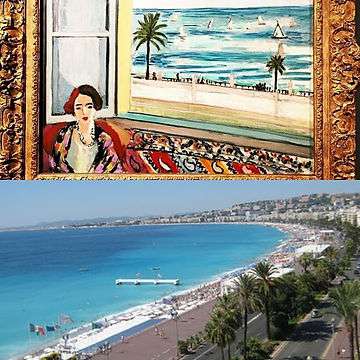“To live would be a constant continuum of creative action and aesthetic appreciation,” says Irwin Edman in Arts and the Man. This quote has stuck with me in all kinds of times, the thick and the thin. It is a reminder of what actually matters and what I should be working for. Hope doesn’t stop, and indeed, it is the only thing keeping us going today as billions of people live under a global lockdown.
Physical space and art have been intertwined for as long as art has existed. Locations around the world and their implications to artists have inspired some of the most notable paintings in history. These locations are of even more significance today as we long for the outdoors.
Here are some locations around the world that have been immortalised in the masterpieces of Impressionism. Add these to your post-lockdown bucket lists, the dream board you look at everyday and visit them once the lockdown is over!
American Gothic, by Grant Wood
The American Gothic House in Eldon, Iowa
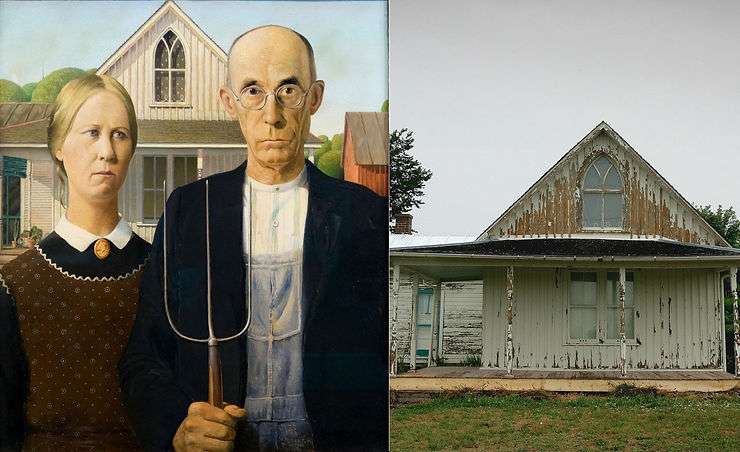
Grant Wood returned home after studying art in Europe in the 1920s and painted The American Gothic House as a celebration of the midwestern culture. Inspired by Wood’s old family photographs, his sister Nan and their town dentist Byron McKeeby stand in as models and are meant to represent typical small-town Americans, particularly a farmer standing next to his daughter.
Today the house is listed on the National Register of Historic Places, and it serves as an event space for the American Gothic House Center, a museum on the property.
The Little Street, by Johannes Vermeer
40–42 Vlamingstraat, Delft, Netherlands
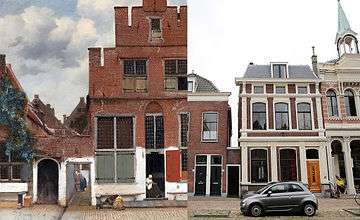
Although there is still much debate over the exact location of Johannes Vermeer’s famous work, The Little Street, completed in 1658, many art historians have agreed that the painting mimics a street scene in Delft, the Dutch artist’s hometown. Vermeer’s mother and sister lived on the same canal, just opposite of the scene he recreated, making the theory quite credible.
Central Australian Landscape by Albert Namatjira
McDonell Ranges, Australia
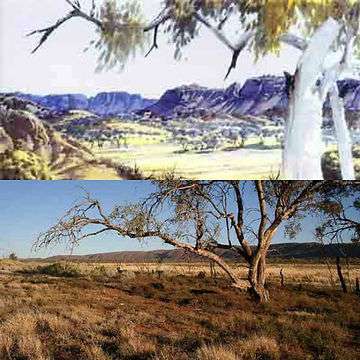
Australia’s most famous Aboriginal painter, Albert Namatjira’s captured the beauty and uniqueness of Australia’s outback through watercolour.
His work can be found in major museums in Australia. You can also check out the original landscapes yourself in Australia’s Northern Territory.
Sunday Afternoon on La Grande Jatte by Georges Seurat
The Island of La Grande Jatte, Paris, France

Sunday Afternoon on La Grande Jatte is Seurat’s most famous painting and a great example of pointillism. The Island of La Grande Jatte is located 7 kms away from the Notre Dame Cathedral, on the Seine River and is always bustling with tourists and art admirers.
Christina’s World by Andrew Wyeth
Olson House, Cushing, Maine

Christina’s World painted by Andrew Wyeth in 1948 depicts a woman lying in the grass looking at a farmhouse in the distance—from the midst of a field. The subject is Anna Christina Olson, Wyeth’s neighbor in South Cushing, Maine. She suffered from a neuromuscular condition and Wyeth sought to capture her unlimited spirit by employing the style of magical realism to add an air of mystery to the scene.
Mont Sainte-Victoire by Paul Cézanne
Aix-en-Provence, France

Paul Cézanne was drawn to Mont Sainte-Victoire, perhaps more than he was to any subject. Some art historians estimate that he painted the scene almost 60 times. Cézanne’s fascination with the mountain was concerning its ability to depict mood changes over the course of a day – or even an hour – because of the way the sunlight struck it. Today, visitors can sit inside several open-air fancy restaurants facing the limestone mountain and take in the beauty that mesmerised Cézanne.
The Hay Wain, by John Constable
Willy Lott’s Cottage, England
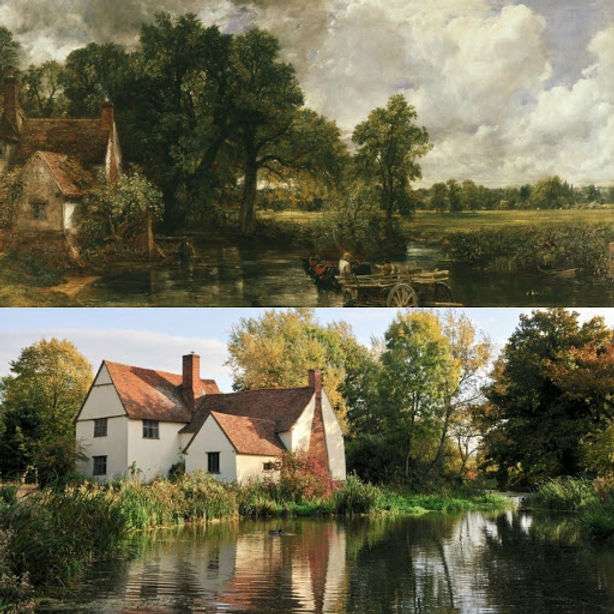
John Constable is widely remembered for his attention to detail. He contradicted the perfect beauty represented in other paintings by his contemporaries by paintings such as The Hay Wain that depict life as it was with its rawness intact. The painting features Willy Lott’s Cottage which is open to students and tourists.
Enoshima in the Sagami Province, by Hokusai

Katsushika Hokusai was one of Japan’s most famous landscape artists. He was best known for his series “Thirty-Six Views of Mount Fuji.” This scene depicts Enoshima Island at the mouth of the Katase River, approximately 50 km to the south of Tokyo. It was the Olympic harbor for the 1964 Summer Olympics and is home to a popular local resort.
Cass, by Rita Angus

Rita Angus, recognized as one of New Zealand’s leading artists helped define a national aesthetic for New Zealand through her sharply-defined, colorful landscapes. Cass, one of her most famous paintings, depicts the raw beauty of the Canterbury countryside region through the lone figure of the Cass railroad station, 116 km from Christchurch.
Seated Woman, Back Turned to Open Window, by Henri Matisse

The beautiful Promenade des Anglais in Nice, France along the Mediterranean coast is present in many of Henri Matisse’s paintings, including Seated Woman, Back Turned to Open Window. It depicts a view over this iconic street, which can still be visited today by tourists.
The Scream, by Edvard Munch
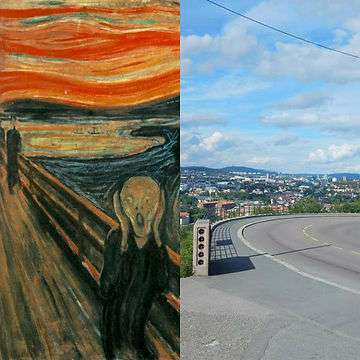
Norweigan painter Edvard Munch is best known as the artist behind one of the most iconic pieces of modern art: The Scream. The site of the painting is an overlook on the side of a road called ‘Valhallveien’ on a hill above Oslo, Norway.
In a diary entry from January 1892, Munch described the source of his inspiration: “One evening I was walking along a path, the city was on one side and the fjord below. I felt tired and ill. I stopped and looked out over the fjord — the sun was setting, and the clouds turning blood red. I sensed a scream passing through nature; it seemed to me that I heard the scream. I painted this picture, painted the clouds as actual blood. The color shrieked. This became The Scream.” The bridge is within earshot of a mental institution that housed Munch’s schizophrenic sister.
Physical landscapes are storehouses of history, culture and legacy. These locations are some of the most popular destinations for admirers of art and history and play an important role in reminding us of the significance of art, especially in times such as these. You can take a deeper look at the history of art and the role of lockdowns in it here.
